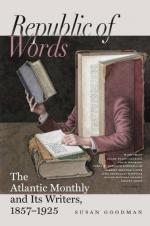Bobadilla’s lump was found by a slave of Francisco de Garay, afterwards Governor of Jamaica. He and the famous Diaz worked a mine together in San Domingo. His slave was poking about with a pike in the shallows of the River Hayna, when the head struck the metal. Garay was so rejoiced that he sacrificed a pig, which was served upon this extemporaneous platter, and he boasted that there was no such dish in Europe. Twenty other ships with gold on board went down in the storm which swallowed up Garay’s waif.[E]
[Footnote E: Great quantities of gold were embezzled by the Spanish officials. Las Casas in his lively arguments with the Council of State in behalf of the Indians, always insisted that his plan for controlling them would be more profitable as well as humane. He promised large increase of treasure, and showed how the royal officers appropriated the gold which they extorted from the natives. Piedro Arias, for instance, spent six years at Castilla-du-Oro, at a cost to the Government of fifty-four thousand ducats, during which time he divided a million’s worth of gold with his officers, at the expense of thousands of natives, whose lives were the flux of the metallic ore, while he paid only three thousand pesos for the king’s fifth.—Llorente: Oeuvres de Las Casas, Tom. II—p.472.]
Many French writers have maintained that the Indians procured their golden ornaments from Yucatan and other points of the main-land, by way of traffic. But they had nothing to barter, and their ornaments were numerous. Besides, the Spaniards found in various places near the rivers the holes and slight diggings whence the gold had been procured. It is said that the Haytian natives only washed for gold, but the Caribs had frequented the island long previously, and they without doubt earned gold away from it. The Spaniards were deceived by the Haytians, who did not wish to dig gold under the lash to glitter on the velvet of hidalgos.




